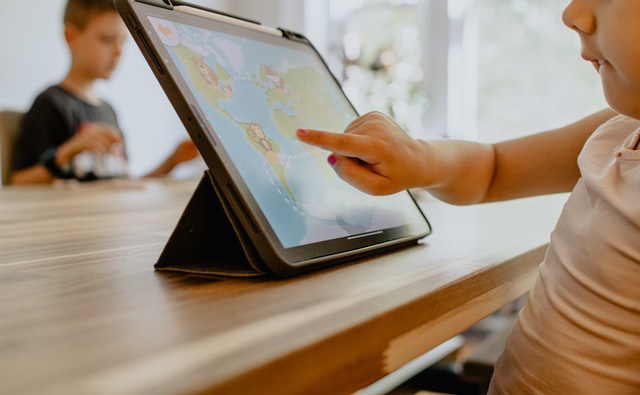
Since COVID-19 quarantine began mid-March, we’ve experienced longing for “returning back to normal” – a pre-quarantine normal. Humans have a natural craving for seasons: we long for cool indoors when experiencing hot and humid air or sitting by the fireside when it’s raining or snowing outside. Seasons can not only be based on months or temperature, but also occurrences in our lives. Naturally, we feel the buzz of this season: “Back to school!” But though schools are back in session for fall 2020, for many of us the learning is “remote” once again.
I recently watched a webinar panel on the topic of reopening schools with professors of education, Drs. Linda Darling-Hammond, Douglas Fisher, Tyrone Howard, and Jacqueline Jodl and a training workshop with Dr. Anne Townsend from Mariposa Education on building resilience in children. I’d like to offer some reflections – a fusion of their thoughts merged with mine.
1 – This is not going to be easy. We may all feel like we’re coronavirus experts now, but in reality, we are still in a pandemic. Stress levels and anxiety remain high among many. Too much focus on academic success can create an additional strain for the whole family. Routine and balance between work demands (for adults and children) and emotional well-being are still necessary. If your child is feeling stress related to the pandemic, consider modeling a practice of self-care.
2 – We’re learning more about virtual learning. What families and schools achieved in the spring was a great effort and commendable considering the personal and professional circumstances. We can perceive the remote learning happening in the fall more as “responsive” rather than “reactive.” Most teachers are no longer creating lessons week-to-week while reading the news and awaiting next steps but instead have more certainty about the status of schools physically reopening for more extended periods of time.
3 – Communal safety is key at this time. We all want the best academic and social-emotional experiences for our children. During this tumultuous and anxiety-provoking time, rather than focusing on the quality of instruction, we can shift our focus to what is truly the most uplifting and enabling for ourselves, our students, our families and our communities.
4 – Some students do well as distance learners. Some students may struggle with motivation, independent work and productivity. However, once students have access to devices and the Internet, while quarantine and distance learning are more challenging for some students, they may be better for others.For example, students can multitask and work at their own pace (faster or slower). In other cases, students who experienced conflicts with peers are finding greater happiness and safety being at home. If you find that your child is actually thriving during this time, analyze why and then plan how those factors can help them now and in the future.

5 – You don’t need to do this alone. You can help your children, but do not have to put the burden of being their teacher on yourself. You can offer focused guidance in the areas where they need most support while helping them to build independence in areas of strength. If you are able to sit with your child to help with schoolwork, ask your child’s teacher for more explicit lessons in subject areas that you personally find more difficult to explain. Encourage adolescents to contact their teachers directly when questions arise – this helps to promote self-advocacy, agency and independence.
6 – Watch for what can be changed for the better in the long-run. Some students’ tech literacy has improved, and parents and school staff are more aware about inequities among students’ access to resources. The present circumstances also present an opportunity to reexamine national academic norms and testing practices. How can schools and families better collaborate? What do we really want our students to gain from formal education? On which content should schools focus? How can we best prepare students for adulthood?
7 – Present circumstances may be unpleasant, but our children will continue to learn and develop. Many families are concerned that younger children especially do not learn well online and need in-person socialization. While that’s true, maybe you have already devised creative ways to adjust with at-home science projects, play- or environment-based learning or more time dedicated to reading. If you haven’t, that’s OK, too! Regardless, remind yourself that this won’t last forever and you might not see the benefits of the effort you are currently putting into your child’s at-home education right away.
Acknowledging these “upsides’’ does not take away from real concerns about lack of motivation, poor attendance, difficulties for students who are not fluent in English or have special education needs, and working parents who cannot afford tutors. And families still have to balance personal well-being, parenting, work and responsibilities as an at-home educator. That can feel incredibly overwhelming.
Still, a shift in mindset can help our children continue to function academically and socially during this difficult time. Validating your own and your child’s feelings can be a powerful way to acknowledge the stressors while focusing on the strengths (e.g., “I know you used to be able to do these things and now you can’t – that’s hard! This is a scary and strange time. This is new for you and for me. I’m here for you. Let’s work on this together.”). Remember, what works for one family, or one child, might not work for another. Flexibility and optimism are key to making sure our children enter the upcoming school year with hope, a desire to be successful socially and academically, and a continued – or perhaps new – love of learning.
Natalya Bogopolskaya is a school psychologist in the Los Angeles Unified School District.
























